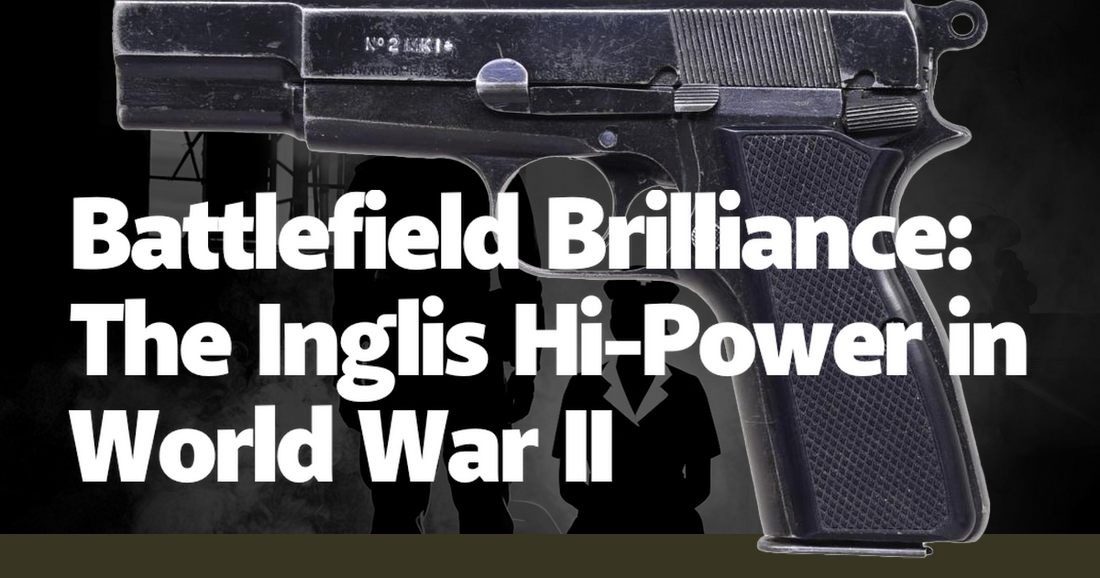As the world plunged into the chaos of World War II, every aspect of military strategy was scrutinized, including the tools soldiers carried into battle. Among these, the Inglis Hi-Power pistol stood out as a paragon of engineering and reliability. Developed by the Canadian John Inglis and Company, this firearm was a licensed version of the Browning Hi-Power, a design that had already demonstrated its effectiveness. The Inglis Hi-Power quickly became a favored sidearm for Allied forces, earning its place in the annals of military history through a combination of robust construction, high magazine capacity, and battlefield adaptability.
The origins of the Inglis Hi-Power are rooted in the innovative mind of John Browning, whose designs revolutionized small arms. The Hi-Power, developed in the early 1930s, was one of the first pistols to feature a double-stack magazine, allowing for a higher ammunition capacity without significantly increasing the weapon's size. This feature alone made it highly desirable in combat situations, where the difference between life and death could hinge on a few extra bullets. When the Canadian government sought to arm its troops with a reliable and powerful sidearm, the decision to produce the Hi-Power under license was both pragmatic and strategic.
Production of the Inglis Hi-Power began in earnest in 1944, at a time when the Allies were ramping up their efforts to push back the Axis powers on multiple fronts. The pistols were manufactured with precision and care, reflecting the high standards of the Canadian armaments industry. Each unit was rigorously tested to ensure it could withstand the harsh conditions of war, from the freezing winters of Europe to the humid jungles of Southeast Asia. The result was a weapon that soldiers could depend on, no matter where they found themselves deployed.
One of the most compelling stories of the Inglis Hi-Power's battlefield brilliance comes from the experiences of the British Special Operations Executive (SOE). Tasked with conducting espionage, sabotage, and reconnaissance in occupied Europe, SOE agents required a sidearm that was both concealable and reliable. The Inglis Hi-Power proved to be an ideal choice. Its compact design and high magazine capacity allowed agents to engage multiple targets without needing to reload frequently. In one notable operation, an SOE agent used his Hi-Power to single-handedly take out a German patrol, buying crucial time for his team to complete their mission and escape.
The pistol's reputation was further solidified in the hands of Chinese Nationalist forces, who received significant quantities of the Inglis Hi-Power through Lend-Lease agreements. These forces were engaged in brutal combat against Japanese invaders, and the Hi-Power's reliability in adverse conditions was put to the test. Reports from the front lines spoke of the pistol's ability to function flawlessly despite exposure to mud, rain, and even the occasional submersion in water. This ruggedness made it a cherished weapon among Chinese soldiers, who often found themselves outgunned and outnumbered.
In addition to its technical merits, the Inglis Hi-Power also carried a psychological weight. Soldiers who wielded it knew they were holding a piece of cutting-edge technology, a product of Allied ingenuity and industrial might. This sense of confidence could be a powerful motivator in the heat of battle, where morale was just as important as firepower. The pistol's sleek design and comfortable grip also contributed to its popularity, making it a favorite not just for its functionality, but also for its ease of use.
The legacy of the Inglis Hi-Power extends beyond the Second World War. Its design influenced countless other firearms and set a standard for what a military sidearm could achieve. Even today, the principles behind its construction—reliability, high capacity, and ergonomic design—are evident in modern pistols. Collectors and historians alike continue to celebrate the Inglis Hi-Power as an exemplar of wartime innovation, a testament to the ingenuity that helped the Allies secure victory.
In conclusion, the Inglis Hi-Power was more than just a weapon; it was a symbol of Allied resilience and technological prowess. From the clandestine operations of the SOE to the brutal front lines of the Chinese theater, this pistol proved its worth time and again. Its impact on the course of the war and its enduring legacy in the world of firearms make it a subject worthy of study and admiration. In the crucible of World War II, the Inglis Hi-Power shone brightly, a beacon of battlefield brilliance that continues to illuminate the pages of history.

